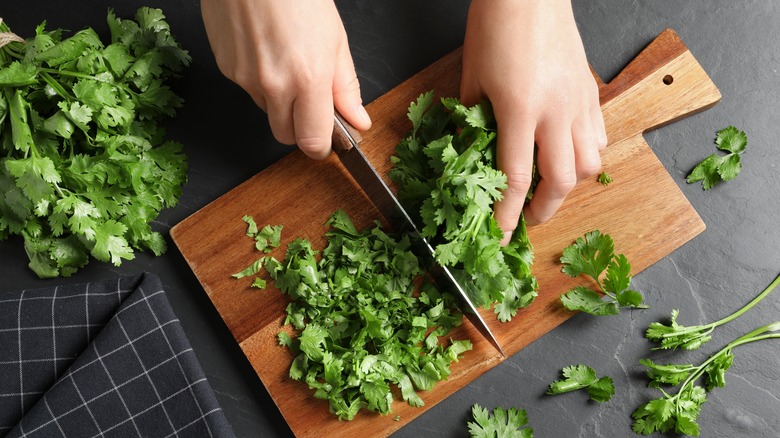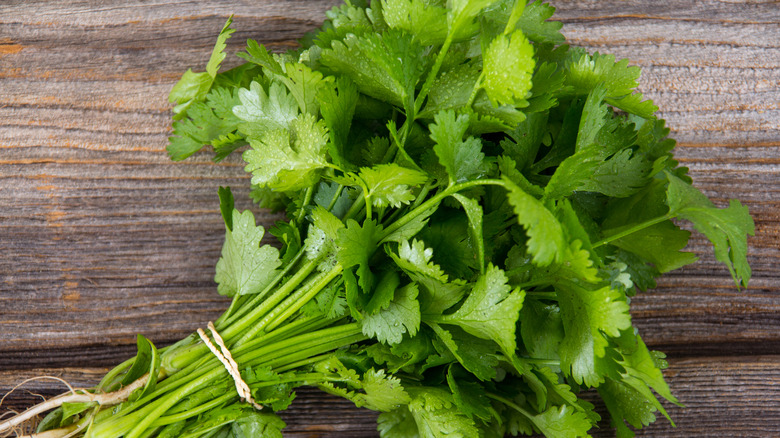Why You Should Stop Throwing Out Cilantro Stems
Cilantro is a divisive herb. Those who dislike cilantro often claim that it tastes like soap – a narrative that's fairly common thanks to genetics. Even if you can't taste the soapy correlation, you may still dislike cilantro; an experience with a slimy bundle may leave a bitter taste in your mouth. Due to the herb's delicate nature, it's easy for cilantro to go bad. You need to store it carefully to prevent leaves from turning slimy and inedible. Yet when cilantro's at its best, it's well worth using. Those who don't fall into the cilantro-is-soap category should know how to make the most of the herb. Cilantro can be used in a multitude of ways; try it in chimichurri, as a marinade, or even atop a cocktail.
Yet when using cilantro, most home cooks tend to forgo the stems entirely, opting exclusively for the leafy tops. While the herb's leaves are surely tasty, the stems are not to be overlooked. According to The Washington Post, tossing cilantro stems is a no-no. It's not only wasteful but a major flavor mistake.
Cilantro stems are versatile and add texture to any dish
The stems of cilantro have uses of their very own. Per Cooking Light, cilantro stems are primed for salads. Simply chop up stalks and mix them in with lettuce for a crunchy addition. Who needs croutons when you have cilantro?
Additionally, you can use stems to mix in to spreads like hummus or salsa. Incorporating the stems into such dishes — which also allow you to throw in cilantro leaves — will not only save you money and flavor but also time. According to The Kitchen Herbs, accepting cilantro stems as equally edible parts of the herb is a time-saver. You can simply chop cilantro as is, without taking the time to pull off its leaves.
Granted, some dishes may not bode well for particularly thick stems, so it's okay to be selective. Cater stalks to dishes that won't be distracted by the addition of cilantro. No matter which part of the herb you use, keep your cilantro fresh by refrigerating it in water. You never know when you'll want some ready-to-use stems.

